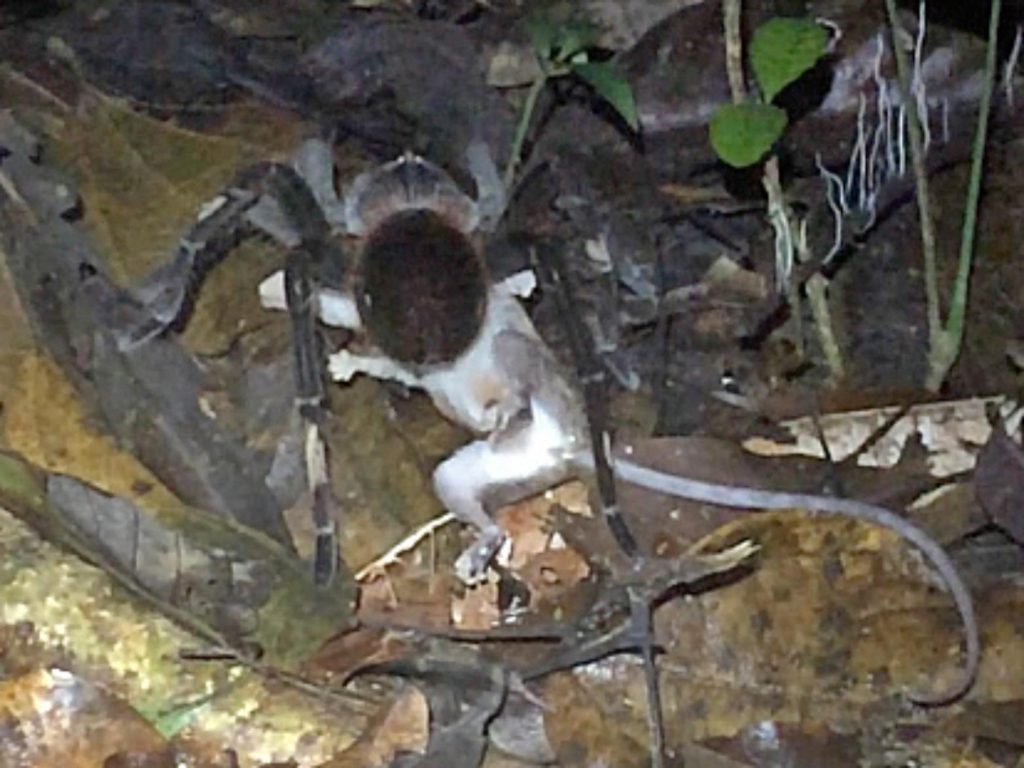Deep in the jungle on the upper reaches of the Amazon, US researchers observe hair-raising scenes: Fascinated and horrified at the same time, they document how spiders hunt for frogs. At night, suddenly a opossum gets into the poison catches of a plate-sized tarantula.
Unusual findings from rainforest field research: Tarantulas, according to recent observations, can attack and overwhelm even mammals. US researchers have followed such a hunt in the Amazon with their own eyes, as they report in the journal ” Amphibian & Reptile Conservation “. In the incident, a tarantula attacked a mouse possum and killed the comparatively small member of the family of South American opossum by a bite in the neck.
“We were all rapt and shocked and we could not really believe what we saw,” said environmental and evolutionary biologist Michael Grundler of Michigan University in Ann Arbor (USA), his impressions. He and his colleagues had set out into the jungle to watch larger spiders eating smaller animals such as frogs. To find a spider eating a mammal is very surprising, said Grundler.
Spider carries her victim
The researchers discovered the plate-sized tarantula (Pamphobeteus sp.) And its victim by chance during a night raid through a rainforest in Peru on the upper reaches of the Amazon. The spider had the mouse possum, a dwarf bag rat from the family Didelphidae, initially recorded in the neck. The researchers themselves could not observe the attack. However, the mammal was still alive at the time of discovery. The animal had pedaled for about 30 seconds, reported Grundler.
Then the big spider had pulled the small opossum to a tree. When the hungry Pamphobeteus noticed the researchers, she was gone, it was said.
It is the first time ever that the attack of a representative of arachnids on a possum has been scientifically documented. From similar observations on the handling of various specialized spider species with amphibians and reptiles, zoologists conclude that the tarantula actually wanted to eat the rat. However, there are no vouchers or photographs of this.
Unknown wildlife in the undergrowth
The scientists are observing spiders because they want to learn more about the food chains and the great biodiversity in the Amazon Basin. Among other things, they were able to document that spiders there used, for example, fish and other larger animals as prey.

The action of the spiders shook even hardened arachnologists: larger eight-legged animals, for example, dragged dead lizards with their front legs close to their bodies in order to be able to pull them better into a hiding place. In other cases, giant millipedes beheaded venomous snakes and peeled off their tough skin.
“One of the coolest things about working in Peru is the sheer number of animal species you encounter every day on a hike through the jungle,” one of the scientists involved summarized her impressions. “These spiders and millipedes are actually scary animals.”

